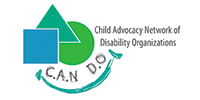What is CP?
Cerebral Palsy (CP) is a disorder affecting muscle tone, movement and motor skills and is caused due to injury to the parts of the brain that controls the ability to use muscles and the body. CP is one of the most common congenital disorders of childhood, and the brain damage that causes it usually happens before or during a child’s birth, or during the first three years of a child’s life. These injuries could be due to infections, maternal health problems, genetic disorders etc. CP is not contagious and not inherited.
CP can range from mild, (the child might be clumsy) moderate, (the child walks with a limp, or might need a leg brace, cane or wheel chair) or severe (seriously affecting the child’s physical abilities, and the child may have to use a wheel chair and other special equipment). CP can also cause other health issues including vision, hearing, speech problems and learning difficulties. However, CP isn’t progressive, and doesn’t get worse over time. Most children with CP have a normal life span, and can be successful learners and full participants of life, with the right support.
Signs and Diagnosis
There are four main types of CP : Spastic CP (causing stiffness and movement difficulties, especially in the legs, arms, and/or back) Athetoid CP (causing involuntary and slow uncontrolled movements and low muscle tone, making it difficult to sit straight or walk) Ataxic CP (causing poor coordination, balance and depth perception) and Mixed CP (which is a combination of the other symptoms listed and could cause some muscles to become too tight and others to become too loose, resulting in a mix of stiffness and involuntary movements).
Some words that are used to describe the different types of CP include Diplegia (meaning the legs are affected), Hemiplegia (meaning one half of the body is affected) and Quadriplegia (meaning both arms and legs are affected, sometimes including the facial muscles and torso).
Treatment
Although there is no cure for CP, early and ongoing treatment, therapy, special equipment and in some cases surgery can reduce the effects of CP and help a child living with the condition. Typically, children with CP may need different kinds of therapy, including Physical therapy (PT), to help develop stronger leg and trunk muscles and work on skills such as walking, sitting, and keeping balance, Occupational therapy (OT), to help develop fine motor skills such as dressing, feeding, writing, and other daily living tasks and Speech-language pathology (S/L), to help the child develop his or her communication skills and help with speaking.
Some special equipment such as braces may be used to hold the foot in place when the child stands or walks, custom splints can provide support to help a child use his or her hands and activities such as swimming can help strengthen weaker muscles and relax the tighter ones. In addition, children with CP would benefit from assistive technology ranging from simple communication devices such as communication boards to help them express their needs, to computer technology with special software.
Source:
http://www.ninds.nih.gov/disorders/cerebral_palsy/cerebral_palsy.htm
